Navigating PPWR: What it means for label manufacturers
The EU’s Packaging and Packaging Waste Regulation
(PPWR) is set to reshape the label industry, pushing
the entire supply chain toward stricter sustainability,
recyclability and reuse standards.
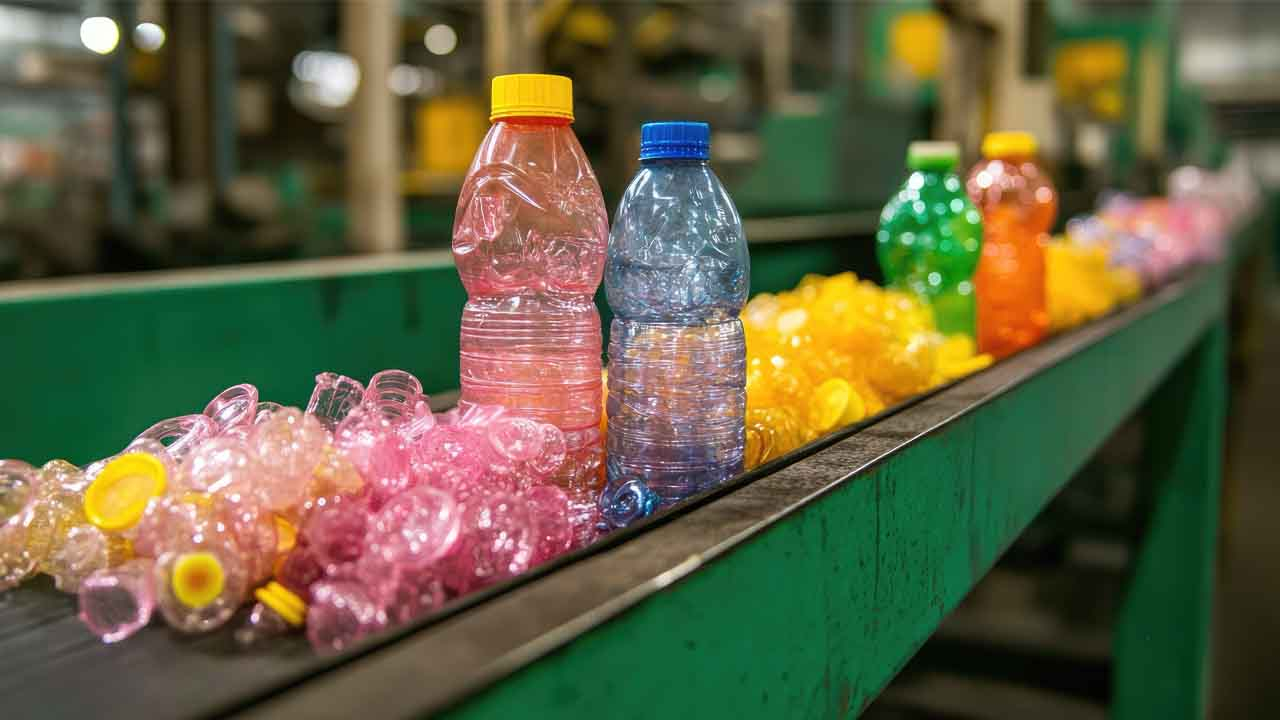
The EU’s Packaging and Packaging Waste Regulation (PPWR) is central to the European Commission’s circular economy agenda, impacting the entire packaging supply chain, including labels. Though labels may seem a small part of the entire package, they play a crucial role in determining packaging sustainability.
The regulation is built on five pillars: recyclability, compostability, recycled content, packaging reuse and eco-modulation, commonly known as extended producer responsibility (EPR).
These pillars will increasingly shape how packaging is designed, labeled and managed across the EU.
Before diving into the key aspects of PPWR, it is important to consider what is and is not considered packaging under this new regulation. PPWR defines packaging as any tangible item used to contain, protect, handle, deliver or present a product from one economic operator to another, including to consumers.
Pablo Englebienne, regulatory affairs and sustainability manager at Finat, discussed this in a recent Finat webinar.
‘It is clear that labels are considered packaging, particularly when they are attached to another product or piece of packaging, such as a PET bottle or a piece of clothing,’ he says. ‘Sleeves and labels applied directly to products are also classified as packaging, as are the cores used to wind flexible materials when sold as consumer units.’
Englebienne continues: ‘However, unprinted labelstock and large cores used in production machinery are not considered packaging, as they serve manufacturing, not consumer functions. RFID tags are explicitly not classified as packaging.’
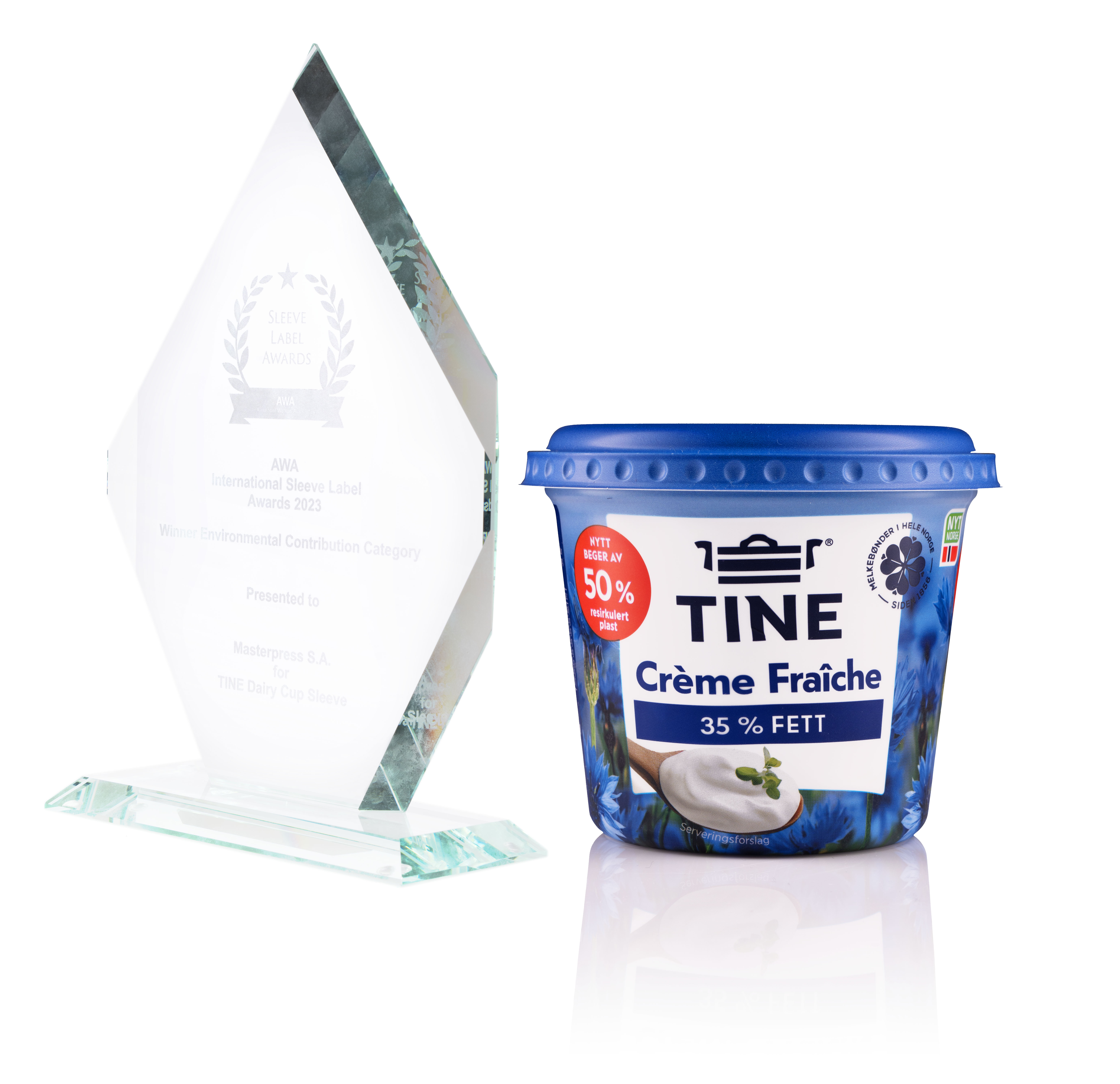
Some areas remain unclear, particularly regarding release liners. In some EU member states, release liners holding printed labels are considered packaging, but there is no universal agreement yet.
Discussions with the European Commission are ongoing to clarify this.
With this understanding, the article examines how PPWR impacts label design, material choices and compliance strategies across the packaging supply chain.
Recyclability by design
At the heart of PPWR is a commitment to design packaging that can be recycled into high-quality secondary raw materials.
PPWR requires all packaging on the market to be recyclable. It must be designed for quality material recycling, and be able to be collected, sorted and recycled at scale without affecting other waste streams.
Starting in 2030, packaging will be evaluated to ensure recycled materials can replace primary raw materials.
Each type of packaging will be judged using specific rules and measurements set by the EU. Based on this, packaging will be given a recyclability grade of A, B or C. Packaging must be at least 95 percent recyclable for Grade A. For Grade B, it must be at least 80 percent recyclable. If the packaging scores below 70 percent, it will be marked as non-recyclable and won’t be allowed on the market.
By 2035, the European Commission may review the minimum requirements based on how sorting and recycling technologies have improved. It may also consider updating the recycling thresholds.
If necessary, the Commission can suggest a new law to change these thresholds.
Material choices for labels and packaging will be key for compliance and costs. The most compatible PSL solutions are those that can be removed during grinding or wash-off recycling
From 2038, only packaging with grades A or B will be allowed, further tightening the requirements.
This has raised the stakes for label manufacturers, who must now consider how their products influence the recyclability of entire packaging systems.
Englebienne explains: ‘The label or sleeve used on packaging, the properties of closures and adhesives, the colors, material composition, presence of barriers, inks, coatings and the printing method, all of these factors will influence the final recyclability performance grade and score.
‘Another important point is that EPR fees, which manufacturers must pay to place packaging on the market, will be adjusted based on the packaging’s recyclability score. This gives manufacturers a strong incentive to maximize the recyclability of their packaging.’
These changes will have significant implications for most label and packaging types, including shrink sleeves, pressure-sensitive labels (PSL), wraparound labels, in-mold labels and flexible packaging.
Says Suvi Rasa, sustainability manager at UPM Raflatac: ‘All packaging in the EU must be designed for recycling. Plastic parts over 5 percent of the total weight must include recycled content. Material choices for labels and packaging will be key for compliance and costs. The most compatible PSL solutions can typically be removed during grinding or wash-off plastic recycling.’
Adds Gabriela Neves Ferri, All4Labels vice president of global R&D and sustainability: ‘When designing packaging, brands must ensure that labels do not compromise the recyclability of the bottle, cap or container. As a label converter, All4Labels assists brands in creating labels that adhere to recycling guidelines.’
The PPWR’s emphasis on recyclability and reusability will drive innovation in label materials and adhesives. Pressure-sensitive labels must be developed with adhesives that allow for easy removal during recycling. Wash-off labels will gain ground as it becomes crucial to separate labels in the recycling process.
Shrink-sleeve labels may require redesigning to ensure they do not hinder the recyclability of the packaging. By reducing waste, linerless labels align well with the PPWR’s goals, and we may see increased adoption as a result.
We’re also seeing more interest in mono-material flexible packaging, like all-PE or all-PP laminates, which are easier to recycle
All4Labels is investing heavily in its Starflake range to ensure label removal in PET recycling, and Starfloat for recyclable shrink sleeves. Similarly, UPM is advancing recyclability and reuse with innovations such as its Carbon Action plastic films and New Wave paper labels, designed to maintain functionality while supporting recycling goals.
Inks and adhesives
Beyond substrates, PPWR is driving a closer examination of inks, coatings and adhesives. These critical components influence the recyclability of packaging and support a circular economy.
‘PPWR emphasizes recyclability, which requires inks that can be removed during the processes without compromising the quality of the recycled material,’ explains Renee Schouten, vice president of marketing at INX International Ink. ‘This requires a balance between strong adhesion during the product’s life and easy de-inking during recycling. INX addresses this by formulating inks that adhere well to various substrates during use but can be efficiently removed during the recycling process to support a circular economy.’
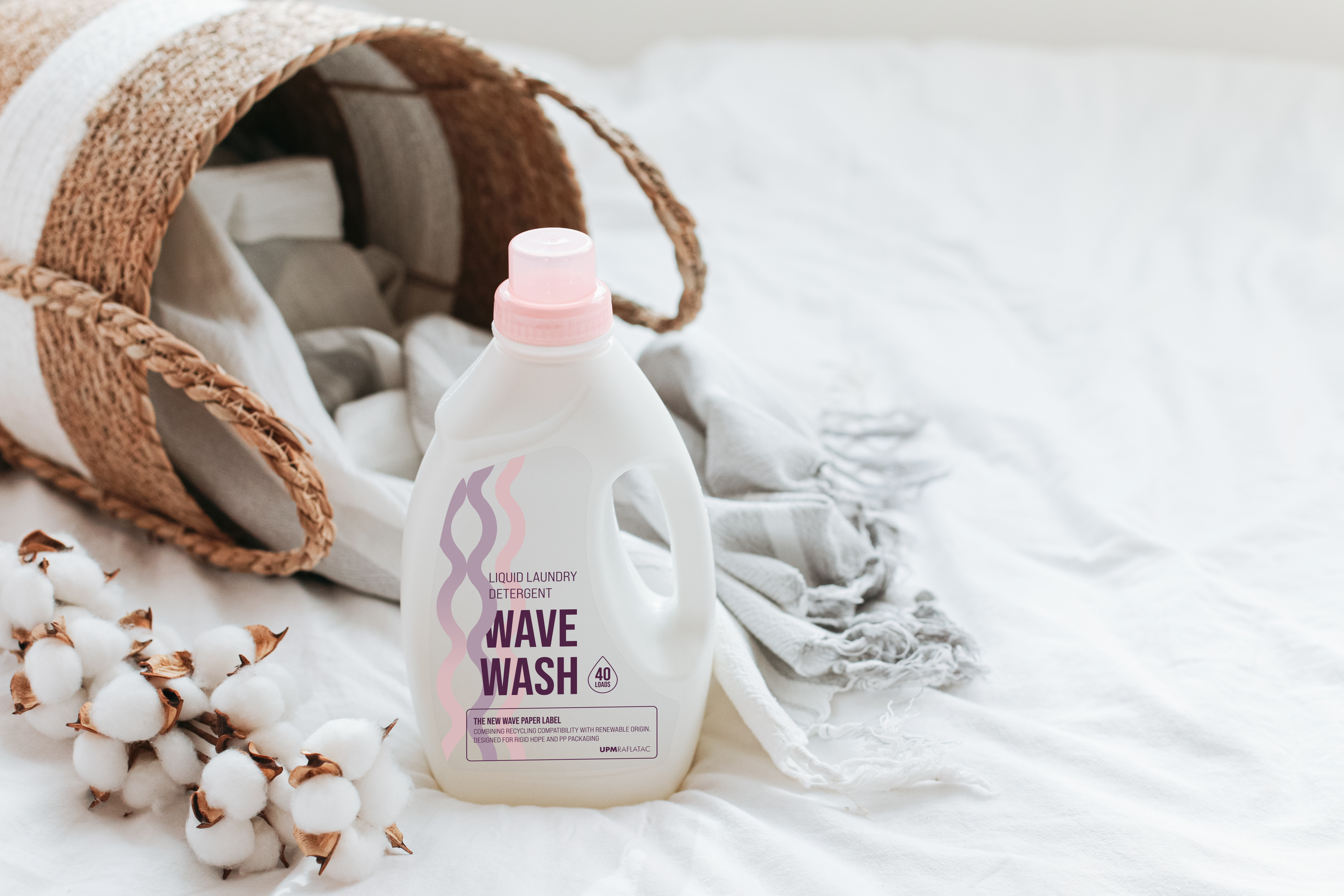
The regulation is already inspiring broader innovation in ink systems. ‘This includes formulating inks with renewable, natural-based raw materials from ethical and sustainably managed sources and ensuring minimal environmental impact without compromising performance. There is also a focus on creating inks that facilitate recycling processes, such as washable inks which can be easily removed during recycling,’ says Schouten.
However, this dual requirement of strong performance and easy recyclability poses technical challenges, particularly in applications such as shrink sleeves.
Demand for compostable label materials is limited and mostly tied to specific applications. Design for recycling guidelines favor recyclable mono-material labels over compostables
‘With shrink sleeves, the challenge includes creating inks that adhere during use, but also can be efficiently removed during recycling,’ Schouten adds.
There is also a growing shift toward water-based and UV inks, which emit fewer volatile organic compounds (VOCs) and better align with PPWR’s environmental focus than traditional solvent-based alternatives. This aligns with a mandate to reduce harmful substances that could impact health, the environment or recycling processes, such as microplastics or toxic emissions from disposal.
Minimum recycled content
A major shift under PPWR is the mandated use of recycled plastic content.
Any plastic packaging component should contain a minimum percentage of recycled content recovered from post-consumer plastic waste to reduce dependence on virgin materials and increase demand for high-quality recycled materials.
The minimum recycled content requirement is 30 percent for food contact-sensitive packaging primarily made from PET, excluding single-use plastic beverage bottles; 10 percent for contact-sensitive packaging made from other plastic materials, also excluding single-use plastic beverage bottles; 30 percent for single-use plastic beverage bottles; and 35 percent for all other plastic packaging not covered by the previous categories.
These requirements will increase respectively from 2040.
‘This requirement is calculated and reported based on packaging type and format, averaged annually per manufacturing plant. It does not mean that every piece of packaging must meet the threshold. Compliance is assessed annually across the plant’s total production,’ Englebienne explains.
Exemptions apply to medical, pharmaceutical and infant food packaging, compostable plastics, dangerous goods transport, and small plastic parts under 5 percent of total pack weight.
‘This raised questions about labels, which are typically lightweight but can sometimes exceed 5 percent,’ Englebienne highlights. ‘In a webinar held last December, the European Commission indicated that labels are exempt from recycled content requirements, though the legal basis remains unclear. It is also uncertain whether this exemption extends to sleeves, and further clarification from the Commission is still pending.’
Floatable shrink sleeves aid PET recycling, but requiring PCR content in all components is difficult when some polymers lack food-grade PCR versions
This presents both an opportunity and a challenge for label producers. While it boosts demand for recycled content, the market for high-quality, food-safe PCR (post-consumer recycled) materials is still limited.
‘A key challenge is using recycled materials in contact-sensitive applications due to contamination risks,’ explains UPM’s Rasa. ‘Chemical recycling offers a safer option but remains limited and costly. Ensuring a stable supply of high-quality recycled materials and gaining regulatory clarity on acceptance of chemical recycling will be crucial for scaling sustainable solutions.’
Finally, recycled material must be recovered according to EU rules, even if sourced outside the EU. Third-party auditing and full traceability of the chain of custody are required for compliance with recycled content requirements.
Additionally, specific environmental claims related to recycled content must meet separate criteria, detailed in upcoming reports, including for bio-based plastics. An environmental claim under the PPWR can only be made if it exceeds what the law already requires.
‘For example, if 30 percent recycled content is the minimum legal requirement, a company cannot promote its packaging as having “30 percent recycled content”. Additionally, any claim must clearly state what it applies to, whether it’s the entire packaging, just part of it [such as the bottle], or an average across all packaging placed on the market,’ Englebienne explains.
Mono-materials
As PPWR pushes for design for recycling, mono-material packaging is gaining momentum. These materials simplify the sorting process and reduce the risk of contamination during recycling.
While paper remains a popular choice, especially for its visual and tactile appeal, brands are increasingly turning to mono polyolefin-based materials such as polypropylene (PP) and polyethylene (PE).
These substrates are more compatible with existing recycling streams for both rigid and flexible plastics and align closely with design-for-recycling (DfR) guidelines from organizations such as RecyClass.
‘Mixed materials can cause contamination and downcycling, whereas mono-material labels enhance sorting and improve the quality of recycled materials,’ says Ferri. ‘We’re also seeing more interest in mono-material flexible packaging, like all-PE or all-PP laminates, which are easier to recycle.’
These mono-materials support closed-loop recycling and perform well in diverse packaging formats.
‘These labels can be recycled with the bottles as they are released during the recycling process. We also advocate for mono-materials in laminate tubes and flexible packaging, which improve recycling efficiency while maintaining functionality and shelf life,’ adds All4Labels’ Ferri.
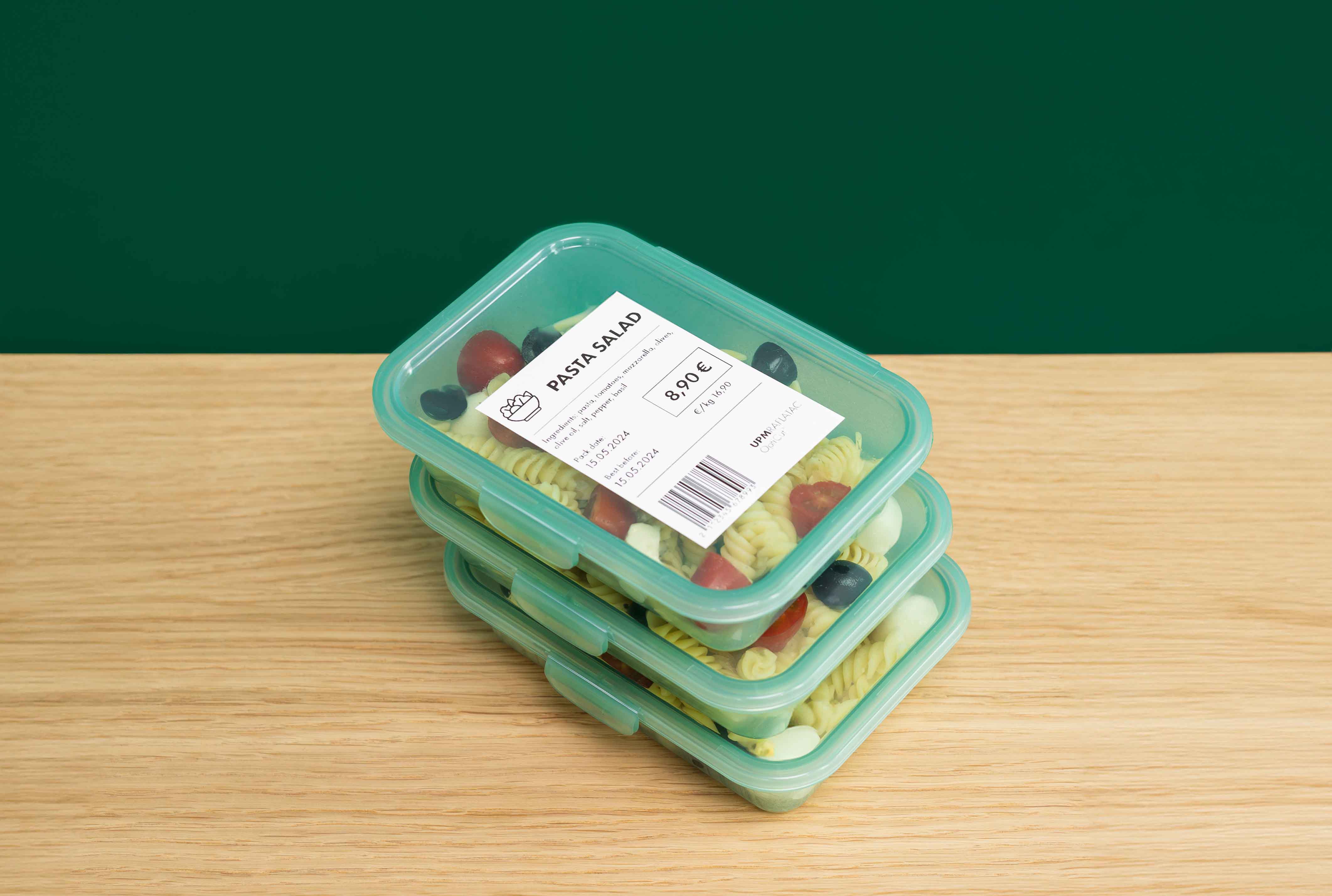
However, the shift toward mono-materials is complex and application-specific. UPM’s Rasa notes that adoption varies across markets and use cases.
‘In some applications, a mono-material approach is the preferred solution to improve recyclability. However, there is still demand for paper labels on plastic packaging. According to DfR guidelines and industry experience, recyclers can effectively process plastic packaging with paper labels. Not surprisingly, this means that while mono-materials are gaining traction, paper labels remain a viable option when designed with recycling compatibility in mind. Ultimately, the shift towards mono-material labels will depend on application requirements, the evolving recycling infrastructure and the forthcoming DfR criteria and recyclability grading.’
The transition also faces infrastructural challenges. Flexible packaging still faces collection challenges in many EU countries and often ends up in mixed waste. Without harmonized collection systems, even the most sustainable materials may not be properly recovered.
Compostable materials
While recyclability dominates the regulation, the PPWR does acknowledge compostable labels in specific cases. One standout example is fresh produce: sticky labels on fruits and vegetables must now be industrially compostable, and possibly home compostable, depending on the member state.
Countries with systems for collecting compostable packaging with food waste may require certain packaging (like non-metallic bags and other pre-approved items) to be compostable.
All other biodegradable packaging must be designed for material recycling, not composting, without affecting the recyclability of the waste stream.
The European Commission may later propose adding more packaging types to the compostable list, based on new technologies or regulations.
Still, compostable labels remain a niche and highly application specific. ‘Demand for compostable label materials is limited and mostly tied to specific applications,’ Ferri says. ‘Design for recycling guidelines favor recyclable mono-material labels over compostables. However, compostable labels are useful for organic and fresh food packaging when paired with compostable primary materials like PLA or paper wraps.’
All4Labels provides bio-based materials through its Starnature portfolio, which includes fully compostable options and bio-based materials.
Harmonized labeling
To boost consumer participation in recycling and support more consistent waste management across the EU, the PPWR is introducing harmonized labeling regulations. These labels must present information in a simple and accessible form, ensuring even individuals with disabilities can easily understand disposal instructions.
Labels must clearly indicate if the packaging is home compostable, and in cases where packaging contains substances of concern, standardized markings must be used. Businesses are encouraged to include QR codes or other digital markers to help consumers correctly sort packaging components. These technologies must be robustly applied and remain legible throughout the packaging’s lifecycle.
These requirements do not apply to transport packaging or items included in a formal deposit return system. The new harmonized labeling system will use a combination of symbols and color coding to help consumers easily identify how to dispose of or recycle the packaging properly.
‘Digital technologies like RFID and intelligent labeling can enhance
traceability and transparency in the supply chain, aiding compliance with PPWR mandates,’ says Mathieu De Backer, vice president, innovation and sustainability, Avery Dennison Smartrac. ‘These technologies enable better tracking of packaging materials, ensuring proper sorting and recycling.’
Packaging minimization and reuse
In line with PPWR’s packaging minimization mandate, labels are also being re-evaluated for size and format. The regulation forbids packaging designed to create the illusion of a larger product. False bottoms, double layers or excessive fillers are no longer allowed.
Reusable packaging placed on the market must meet specific requirements.
It should be designed for maximum use, durable under normal use, safe, hygienic and maintain product quality through reuse. It must also support labels that provide information on the properties of that product and on the packaging itself, including any relevant instructions and information for ensuring safety, adequate use, traceability and shelf-life of the product and safe handling, and be recyclable after final use.
A key point to highlight is the reuse targets for alcoholic and non-alcoholic beverages (excluding wine and dairy), such as soft drinks and bottled water.
These products must meet a 10 percent reuse target by 2030, reaching 40 percent by 2040. This will impact label requirements for reusable packaging by 2027.
Smart labels play a critical role in implementing deposit return schemes (DRS). Labels equipped with machine readable barcodes, QR codes or RFID tags allow reverse vending machines (RVMs) and sorting facilities to recognize and process returnable packaging accurately.
For refillable or returnable packaging, such as glass bottles, labels must strike a balance between durability and removability. They need to survive multiple use cycles without compromising the container while leaving zero residue when removed.
Compliance and EPR
Under this legislation, producers are responsible for the entire lifecycle of their packaging, including its design, collection and disposal. This shift is intended to remove some of the burden traditionally placed on consumers and local governments, transferring accountability to those placing packaging on the market.
To demonstrate compliance with the PPWR, responsibilities are divided across the supply chain.
Brand owners must ensure their packaging meets PPWR requirements and must prepare a declaration of conformity detailing the packaging’s design, manufacturing and markings.
Suppliers of packaging and materials must provide brand owners with the necessary information and documentation to support this compliance.
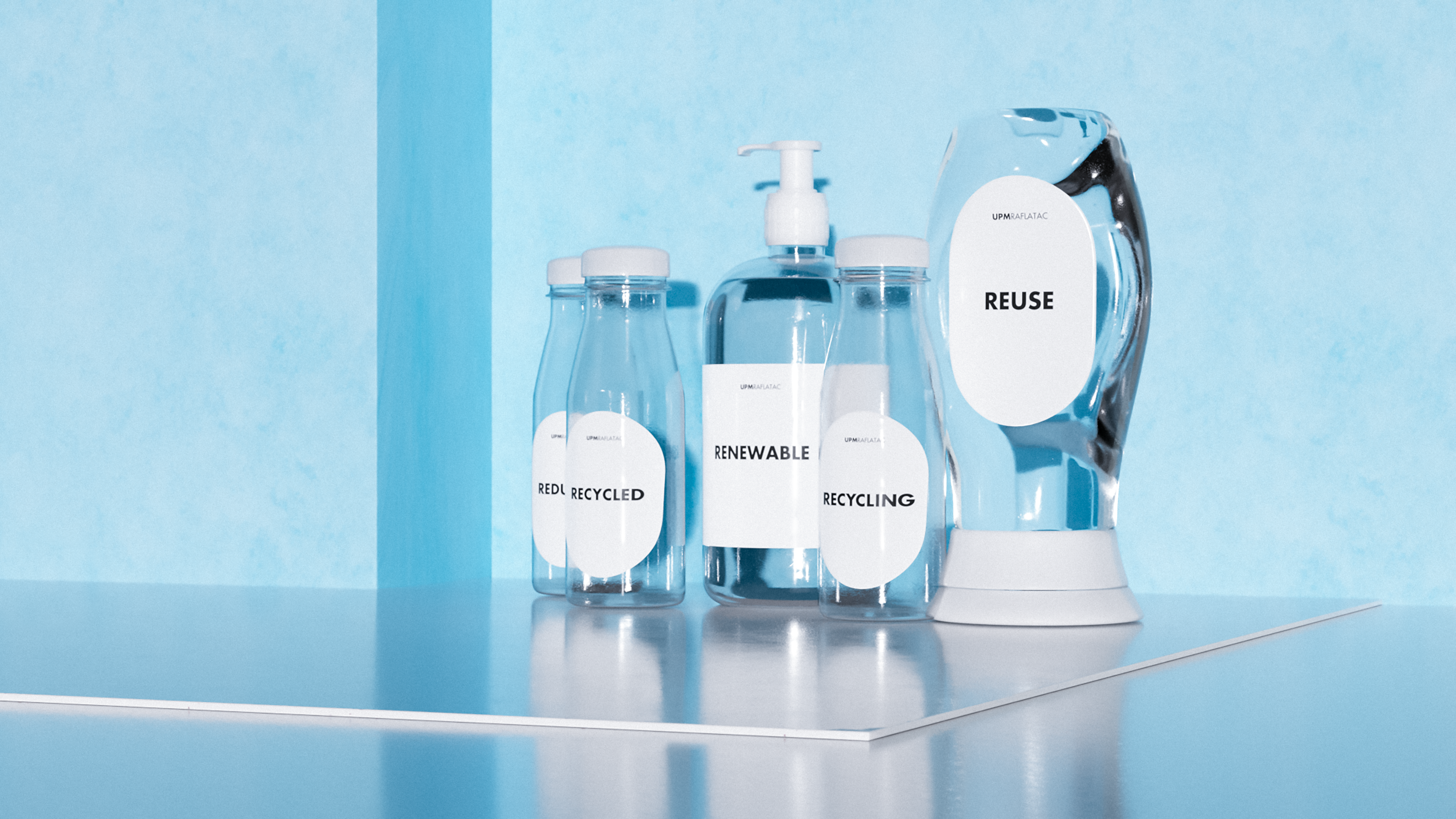
This information can be shared either on paper or electronically, with commercially sensitive details remaining confidential.
In addition, EPR rules will be harmonized. Producers must register their packaging in each EU member state where it is placed on the market and may appoint a representative for compliance purposes. Reporting requirements will be streamlined across the 27 member states to simplify the process.
EPR fees may also be adjusted based on the packaging’s recyclability performance grade and the amount of recycled content. Producers are urged to develop packaging that is easier to sort, recycle or reuse. Non-compliance with recyclability and sustainability standards may result in penalties, restricted access to markets, or increased EPR fees.
Collaboration
One of the recurring themes from industry leaders is the importance of cross-sector collaboration. Label manufacturers, ink formulators, brands, recyclers and policymakers must all work together to create a compliant, circular economy.
‘The biggest challenge in ensuring compliance with the PPWR is that proactive engagement and close collaboration are required across the entire label value chain,’ Rasa shares. ‘Many critical details, such as the Design for Recycling criteria, the eco-modulation fee calculations, and the verification method of recycled content in plastic packaging, will be defined in secondary legislation.’
The evolving regulations present potential for innovation, but the rapid implementation timeline is a concern.
‘Continuous monitoring of secondary legislation development and strong value chain collaboration will be essential to successfully meet the challenges posed by this regulation,’ Rasa adds.
The PPWR aims to drive innovation by setting ambitious targets, encouraging material testing and development, and pushing producers to rethink packaging through use of EPR measures.
Digital innovation, sustainable materials and circular design will shape the next generation of labels, supporting recyclable packaging and more efficient waste management across Europe.
How does PPWR impact label manufacturers?
Different label types face their own unique challenges under PPWR. The regulation prioritizes design for recycling, with materials minimization and facilitating effective sorting to allow allowing for clean recyclate recovery.
‘With PSL, there are two main areas of focus,’ explains Gabriel Magdaleno, strategic product management and marketing director, Masterpress. ‘One is releasable adhesives. The label should come off so as not to contaminate the recyclate. The second is moving away from fiber loss-based paper labels, which can disrupt recycling. Non-fiber-based labels (such as PP or PE labels) and “non-fiber loss” paper labels are the preferred pressure-sensitive label materials to promote cleaner recycling.’
There is also an increasing focus on minimizing material usage. In the case of PSL, preference might shift to thinner liners and face materials. The key is how the industry can downgauge material as much as possible while maintaining container functionality and efficiency in the production line.
Shrink sleeves also require careful design. A full-body sleeve could contribute to a plastic bottle to be misidentified and improperly sorted into the wrong plastic polymer stream.
For instance, on a polypropylene dairy cup, a PP-based shrink sleeve ensures compatibility with the recycling stream.
In contrast, for PET bottles, ‘you need a floatable shrink sleeve that allows for label separation and easy identification of the PET substrate. In this case, a partial-body label could help determine that it is a PET bottle,’ Magdaleno explains.
PPWR’s push for post-consumer recycled (PCR) content adds challenges, as not all plastics, especially polyolefins like PE, have readily available PCR versions.
Magdaleno explains: ‘While PET recycling is more advanced, challenges remain. Floatable shrink sleeves aid PET recycling, but requiring PCR content in all components is difficult when some polymers lack food-grade PCR versions. Even for indirect food contact, producers expect labels and inks to meet strict food-contact and low-migration standards.’
This also puts pressure on European plastic suppliers. Many materials currently come from outside the EU, and the proposed ‘mirror clause’ would require imported plastics to meet EU standards, which could further complicate supply chains.
Another pressing concern is the lack of finalized recycling guidelines under PPWR. While tools like RecyClass exist, they aren’t yet formally included in the regulation.
‘We’re still waiting for the official design-for-recycling criteria, which we expect in 2027. Until then, we have to be ready with multiple solutions, even though we don’t know which way the regulation will go,’ Magdaleno explains. ‘It creates a lot of uncertainty for us and for brand owners.’
This regulatory ambiguity also impacts discussions around whether labels will be considered part of the packaging that must include recycled content, especially since they’re often removed during the recycling process.
Magdaleno adds that label specification is often overlooked in early packaging design. ‘If we’re involved sooner, we can ensure container and label choices align for both compliance and performance.’
How does PPWR impact brands?
The last decade has seen progress on label sustainability, recyclability and waste minimization.
However, as Simona Camilli, sustainability manager at AIM – European Brands Association, notes: ‘Now we have concrete targets that we need to comply with in this new legislation. This requires urgent and deep coordination across the supply chain, from packaging manufacturers to recyclers.’
One of the biggest concerns for brand owners is the lack of clarity and predictability in how these regulations will be implemented. ‘We need to have predictability and also adequate notice of timing,’ Camilli says, stressing that packaging design changes often take up to two years to complete, making it vital for the industry to have clear, actionable guidelines upfront.
She also notes the challenge of harmonizing labeling across EU member states: ‘We need to have a pictogram system. We cannot have translation; that’s when we have the crowded packaging.’ Without harmonization, brands may face the burden of producing market-specific labels, which is costly and has its own environmental impacts.
There are also concerns around colored pictograms. ‘While appealing in theory, they present real challenges in practice, particularly in printing, where additional colors may not be compatible with existing packaging palettes,’ she adds.
Camilli highlights the growing demand for digital tools and traceability technology that can help brands comply with overlapping regulations.
‘There is a vast volume of information that brand owners are now required to manage and share across the entire value chain, as well as with consumers and market surveillance authorities. As a result, it’s crucial for them to assess whether their current tools are still fit for purpose, or if more efficient and suitable solutions are available.’
She adds that it's essential to recognize the technical and operational realities within current packaging production processes. PPWR is a flagship regulation with ambitious sustainability goals, but success depends on a realistic and workable implementation. ‘This includes allowing adequate lead times; changes cannot be expected within a year. At a minimum, the industry needs two years, if not more, to make the necessary adjustments without disruption,’ she concludes.
Stay up to date
Subscribe to the free Label News newsletter and receive the latest content every week. We'll never share your email address.


